Content Warning: This album contains some explicit language.
Most Popular:
- “Anime Intro“
- “Fine!”
- “Sober“
Personal Favorites:
- “Anime Intro”
- “Fine!”
- “Sober”
- “THE HUNT”
- “My Caustic Ego”
- “Babe ur So Exciting”
Reviews of older and classic albums
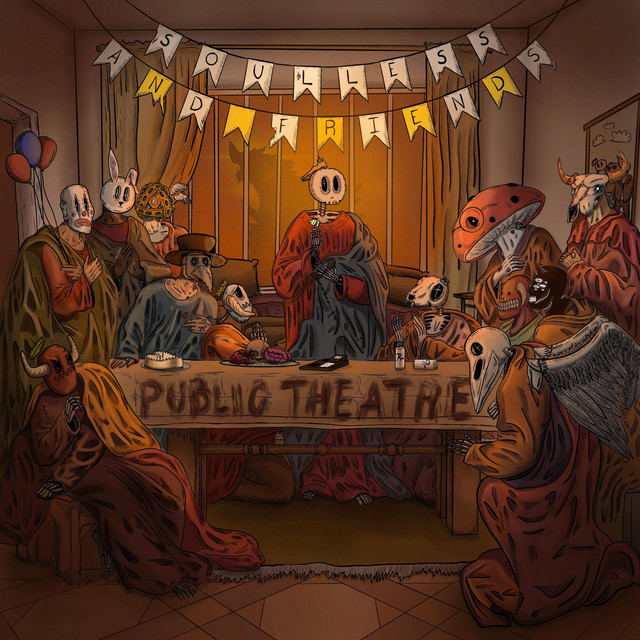
Content Warning: This album contains some explicit language.
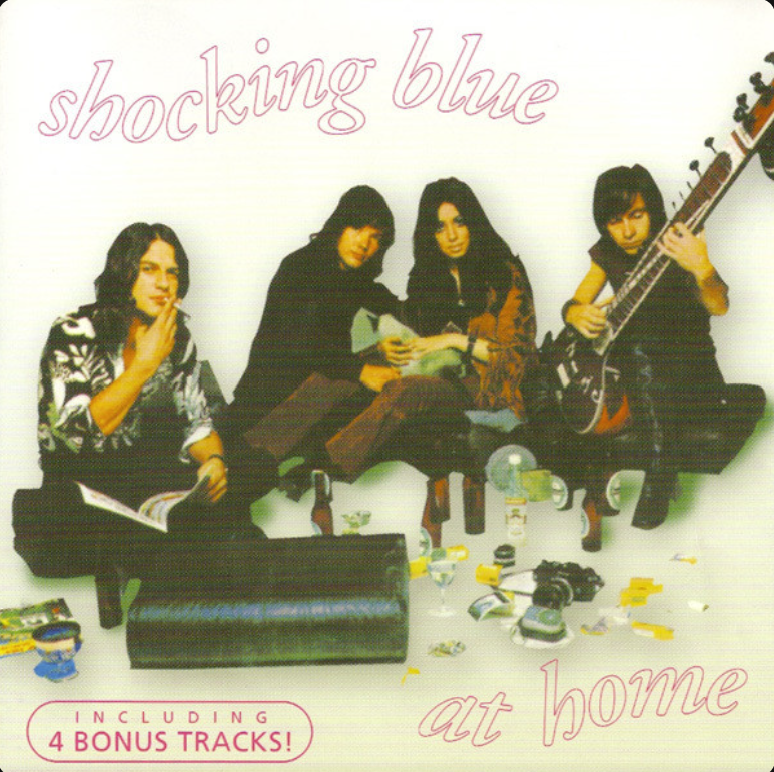
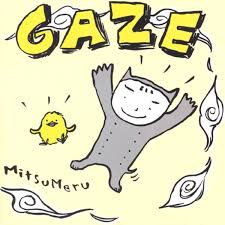
Album cover for Gaze by Mitsumeru
Gaze was a Canadian indie pop band with shoegaze and twee leanings. Their drummer, Rose Melberg, was part of a number of other musical groups within the genre such as The Softies and Tiger Trap. The band only released two albums before disbanding but I think that both are worth a listen. While often criticized for lack of musical variety between songs, each song feels emotionally sincere. They may not be the most musically complex band, but their frank lyrics describing everyday frustrations and arguments endear them to me. A friend of a friend you can’t stand, a break up that leaves you bitter and an argument where insults are thrown back and forth are all stories explored within the album “Mitsumeru”.

Notable Tracks: “The Old Guard is Dead,” “I Gazed Upon The Trap With Ambition,” “The Apple That Scarcely Fell,” “Critical Acclaim,” “Branded“
#GoyardHere
Ghais Guevara has completed his masterwork and ended his tour as an underground hip-hop journeyman. His debut album takes the form of a play in two parts, featuring the protagonist Goyard Ibn Said.
The first is an energetic reflection on the triumphs of rapping, the thrill of ambition, and the love of the game. The second section takes a turn into a dark reflection of the cost of fame and the rot of the hip-hop industry unlike anything Guevara has ever done before.
Throughout the album, Guevara shows off his idiosyncratic production and flow, mixing in samples from Spongebob, classical music, and soul, while writing wordplay with references that range from David Fincher’s “The Killer” to J. Sakai’s “Settlers: The Mythology of White Proletarianism.”
These references paint a pointillistic picture of Guevara – his love of the rich history of hip-hop, a Philly upbringing, his roots of black radicalism, and a fiendishness for brands like Prada.
The leftist braggadocio he cultivated on his first mixtape, “BlackBolshevik,” is subtler, as the persona of Goyard takes over for the album. The pastiche of different styles and sampling coalesces to create an awe-inspiring sound, mastered from his previous mixtapes.
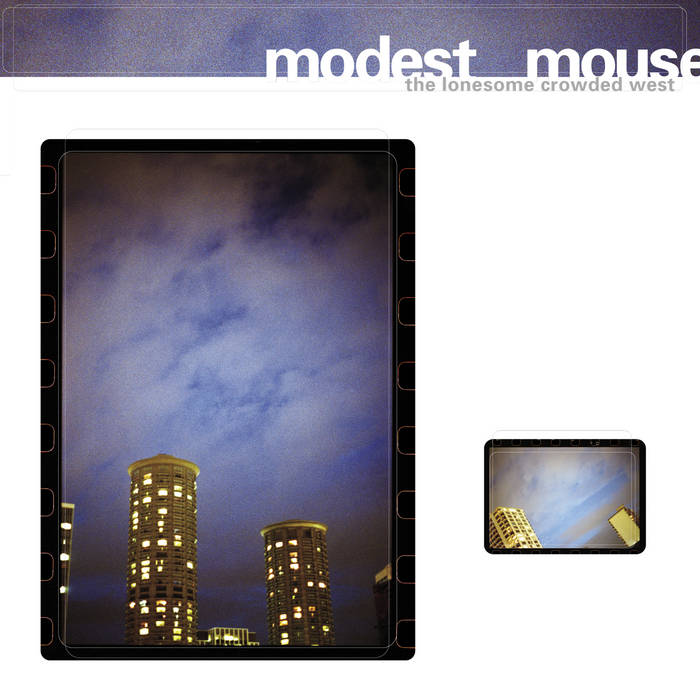
I don’t remember how I found Modest Mouse, and maybe that part doesn’t matter. I just remember how I felt: lonely, disconnected, achy in that way only teenagers on the precipice of young adulthood can ache.
It was almost winter, and everything was crisping up and preparing for death. I trodded up and down the roadside, shapeless in layered flannels, and gave myself windburn.
I had no destination in mind; I would simply walk as far as the grass would take me, pretending I had some greater purpose. Occasionally, I’d listen to music.
I’m on my way to God don’t know
My brain’s the burger, and my heart’s the coal
I’m trying to get my head clear
I push things out through my mouth
I get refilled through my ears
“Heart Cooks Brain,” by Modest Mouse
“Heart Cooks Brain,” an ode to emotions dominating logic. The song sounded the way I felt: lumbering, wind-chapped and just a little pathetic. There was a thread of humor there, too, a shock of self-deprecation highly attractive to my melancholic teenage self.
The song came from Modest Mouse’s sophomore album, “The Lonesome Crowded West,” listed by Pitchfork as one of the greatest albums of the 1990s.

It’s a long album — with a runtime of over an hour — and despite its various stylistic shifts, it manages to maintain a cultivated sense of honest disillusionment throughout.
I think of dried out autumn leaves and the scent of car exhaust, or clumps of fur falling off a squirrel carcass. Ephemeral things. An orange sun dragging across a bleached-bone sky. The ineliminable passage of time. Nostaglia like a knife through your ribs.
When you’re a teenager, misery feels eternal. Time flows like concrete. Everything smarts like you’ve rubbed yourself raw with pumice. You put on eyeliner and pierce your own ears and buy a digicamera, because all of these things are Acts of Self-Actualization and they’re the only things you can do that seem to matter in your state of semi-powerlessness.
You’re a kid-but-not-quite, teetering on the precipice of ego death, writhing in your ill-fitting skin. You’re barely autonomous, and no one understands you, so you commune with radio waves. You look for salvation in strange places and in strange music. The act of listening transforms into the art of ritual and you keep the magic to yourself so no one can steal it.
Live in trailers with no class
Goddamn, I hope I can pass
High school means nothing
Taking heartache with hard work
Goddamn, I am such a jerk
I can’t do anything
“Trailer Trash,” by Modest Mouse
My friends didn’t “get” Modest Mouse, and I didn’t bother trying to make them understand. Sure, everybody knew “Float On,” but the band’s other stuff? Too abstract. Too weird.
Maybe they were right. Isaac Brock’s penchant for colorful metaphor — (“eating snowflakes with plastic forks“) — and reedy, sometimes staggering voice wasn’t for everyone. Especially in “The Lonesome Crowded West.”
The album wore many hats. Sometimes it was plain indie, slow-paced and stripped down (“Out of Gas“). Other times, it was almost punk (“Sh– Luck”) or straight-up folk (“Jesus Christ Was an Only Child“).
The multitextural quality of the album was one of its principal appeals. It wasn’t a cohesive narrative, per se, but it was like an impressionist painting; stepping back from the flurry of discordant brushstrokes revealed a harmonious picture.

Life gets lonelier when you’re an adult. The energy to sustain social relationships, let alone make new ones, is often far too finite. It often seems unsurmountable.
Over the summer, I moved to the country. As I puttered away from the city and through miles and miles of farmland, I felt lonelier than ever. Familiar landscapes and familiar people melted into sprawls of tobbacco fields and sunbleached barns.
In the first few weeks of the new semester, I spent these drives near tears, languishing in the agony of complete and utter solutide. My chest ached like a bruise. I felt as frivolously miserable as a teenager with a bad haircut. I was borderline inconsolable, on the verge of total breakdown.
So naturally, I cranked up the radio.
Out of gas, out of road
Out of car, I don’t know how I’m gonna go
I had a drink the other day
My opinions were like kittens, I was giving them away
“Out of Gas,” by Modest Mouse
The feeling of comfort I felt as a teenager returned as the album progressed. I hummed the chords as I drove farther and farther from the city. The lyrics were tired like I was tired, but the beat’s energy lured me away from that Edge of Young Adult Madness and into a state of tacit acceptance.
The idea of a “Lonesome Crowded West” is intentionally oxymoronic, and more real than ever. The breakdown of community leaves us isolated even as the bloated bellies of our cities progressively swell.

Whether it be the result of neoliberalism, socioeconomic instability, climate change or TikTok, the loneliness epidemic is rewriting the mechanics of our social culture and leaving young people fractured and disconnected.
I see the themes of “The Lonesome Crowded West” reflected in my own lonesome crowded East. We’re all overworked and overtired, watching the landscape be rendered unrecognizable in real time. We ache for lost familiarity and hunger for the new and exciting.
Things are different and things are the same in the best and worst ways. So it goes.
-J

“Radiosex” is an electronic/alt-R&B song by JIL from their 2018 album “Emotional Heat 4A Cold Generation.”
It’s a song about love that has become mechanical and meaningless. The music itself in the first half of the song feels like an anxious limbo, either waiting for a decision to be made, or to muster the strength to make it yourself. The production reminds me a bit of James Blake, and the vocals of Moses Sumney.
Part of the first verse goes,
Held you in my arms /
Still I couldn't keep you close to me
Living in a world
Where sex is suicide (suicidal)
Making love to feel inside,
we watch each other die
Living by a limit,
reaching past our means
As the song goes on, it reaches a point where it slows down, as if to stop and think; momentarily, there are no words. The space for revelation feels too still, so racing arpeggiated fears bleed their way back in. It’s beautiful and briefly grandiose, woven with melodic wails from the anonymous singer. And then it all dies down again.
“Radiosex” is good company for moments of solitude. It’s five minutes and 35 seconds that seem like one big question, or that aforementioned limbo. Like swimming in space.
The rest of “Emotional Heat 4A Cold Generation” also has some very lovely tracks worth checking out, some of which I’ve played in sets before (“Micromoog“). JIL does a good job of combining the electronic foundations of their songs with organic, soulful, psychedelic elements. I’ll let you know what I find in further exploration of their discography.
love & disco (be well),
dirty chai <3

JIIN is something of a digital wraith.
All I can find on this man is that he’s from Toronto. And that’s from a VICE interview from 2015.
He’s only got a few projects out, most of which are singles, but there is one that is very special: his 2015 EP, called “Cult Hymns.”
I originally found “Cult Hymns” in 2021, if memory serves, and it was sticky limerence at first listen. I remember I first became enamored with the concept of digital dystopia then (you know when you spend so much time being afraid of something, how it starts to become comforting?) as I was just about drowning in literature about class struggles and rotting social structures, transhumanist visual culture and desolate electronic ambience.
So, “Cult Hymns” was a perfect addition to that arsenal.
There are seven tracks, two of which feature R&B artist Daniel Caesar. The first track, “Brothers,” starts the EP off in unsettled whispers and a sustained synth that sounds a bit like a siren. They trickle off into flickers that, to me, seem to resemble city lights reflected in a polluted body of water.
In that VICE interview I mentioned, JIIN talks about being inspired by “The Sword of Doom,” a samurai movie from 1966 and “Akira,” the 1988 Japanese cyberpunk film, among other things. “Every time I watch something, I automatically soundtrack it in my mind, and vice versa. It can be a voice note or a weird thing I watched years ago. Probably why I can never sleep,” he says.
The next track on the EP is “Cult Logic,” a song that sounds like it would be played when the world ends; a thoughtful “Congratulations, it was all for nothing!” The song is disturbingly upbeat for its premise and speaks of feeling trapped in something, presumably a messy love whose time is up:
Eyes in paradise falls
One more rock for the mockingbird call
The sun rises up for me
Isn't what you showed to me
Let the water wash away your sin
The third song on the EP, “F***ed Up,” features Daniel Caesar. On it, Caesar lazily sings about being alone once more, getting caught up in women, work, and drugs to fill the void of a lost lover. JIIN’s production makes the intro to this one promising, but I’m honestly not the biggest fan of Caesar’s vocals against the music.
The fourth track, “Bury Me in Money,” is a fuzzy pool of chants and bass that throbs like a headache. After it is “Pole Dancer,” which bears samples of a koto and a synth so distorted it sounds like a scream. Both tracks are instrumental, contributing something a little trashy to this late-stage capitalist nightmare of a soundscape JIIN has created.
The last two tracks on “Cult Hymns” are my personal favorites: “God,” featuring Daniel Caesar and “Fell Thru,” another instrumental.
“God” is so eerie and suffocating at times; Caesar sings about succumbing to isolation as “Cult Hymns” comes to a climax. It sounds like a breaking point as he begs for affection. Bestrewed throughout the song is classic symptoms of madness: sounds of furious scribbles and pages being torn from a book. Makes you feel like you’re right there with him.
Then lastly, but definitely not least, is “Fell Thru.”
This song is a wasteland. It’s barren and beautiful, and I save it for the quietest hours of the night. I find something about it so tender, in the midst of its empty space and crumbling architecture. It’s unclear what’s being sung, but it sounds both like a “thank you” and a “goodbye.” It’s been a soundtrack to many a late night over the years, and I’m so glad to have unearthed it again.
Perhaps knowing so little about JIIN and his intentions for his work is what makes “Cult Hymns” such a treat. It allows you to make sense of the bleakness for yourself, deciding what each of the songs could be about, if at all; it’s equally nice to sit with it for what it is, too, letting the abyss do the talking.
love & disco & desolation,
dirty chai <3
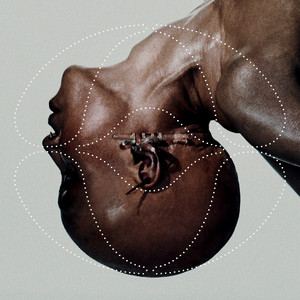
“Drums of Death” is FKA twigs’ newest release, the third single from her album “EUSEXUA,” featuring producer Koreless and an array of sensuous textures.
It’s carnal and angry, the coarse motor thrum and the drum beat, but it retains some semblance of ethereality from twigs’ fae-like voice. Later in the song though, the softness of her voice almost adds to the sense of violence as she hisses “Hard metal / Silver stiletto / Devour the entire world / F*** it, make it yours / Do it just for fun.”
The word “eusexua” is one twigs made up herself, roughly meaning a sense of euphoria so deep it becomes meditative: a rapture that transmutes from heat in the core to a flush of the face, and every nerve becomes a live wire.
Different tracks on the album seem to embody different flavors of it, sometimes coming in airy and weightless, but “Drums of Death” is a meditation on booming bass and body movement. I have synesthesia (can you tell I love texture?) so “Drums of Death” is a fun excursion with all its superficial clicks and flits and its pounding basal heartbeat.
The video for the track was released as well, and it reminds me a lot of Aphex Twin’s “Windowlicker” with its strange choreography and dynamic camera movement. In it, twigs sports a pixie cut and a suit, dancing on an office chair in sync with her colleagues.
They all quickly lose the officewear not long after, prowling about in undergarments instead. Around 2 minutes and thirty-seven seconds is when twigs looks like herself again, and the entire video has fully devolved into strobing lights and unfiltered motion of limbs and muscle. The lighting complements the song well too, harsh enough to highlight the dancers’ anatomies in ways that are more graphic than they are sensual.
“Drums of Death” is infectious and peculiar, and I’m excited to see what other alien fruits “EUSEXUA” will come bearing.
love & disco (be well),
dirty chai

I’ve recently made a return to ceremonial sound after a month-long venture into what I’d describe as “comfort genres” (for example, 90s eurotrash). One of my favorite Western artists that falls under that category is Roberto Musci, an Italian musician who makes incredible use of field recordings from the Eastern world.
The first song I ever heard of his, and perhaps my favorite song of all time, was “Claudia, Wilhelm R and Me” from his 2016 album “Tower of Silence.”
I’m not sure exactly how I came across it; I just remember being 13 and feeling like what I had just discovered was something profound. “Tower of Silence” has been tucked into my pocket since, and I tote it around like a lucky charm.
I’ve started to explore his older work more as of late, namely his first release called “The Loa of Music (The Complete Sessions).”
Released in 1983, it was a product of his travels about Africa, Asia, and the Middle East: “The Loa of Music” has field recordings of chants in different languages, instruments unfamiliar to mainstream Western music, and storytelling from across the globe.
Some of my favorite tracks from the album are the ones with Indian elements (sue me), including “Improbably Music,” “Katak Dance for H. Partch” and “Lazy Raga.”
They are delightful in their incorporation of the Hindustani sound, while still taking a contemporary, experimental stance on the endeavor.
“The Loa of Music” is a beautiful collection of songs to meditate to — move about to, breathe in rhythm with, sit outside to — and what better time for that than now.
love & disco (be well),
dirty chai <3

“Hide In Plain Sight,” off of Jim James’ 2016 album “Eternally Even,” is a spiritual pondering.
For those who are unfamiliar, Jim James is one of the members of the rock band My Morning Jacket, and “Eternally Even” was his second solo release. The entire album is a work of art (I also really love “Same Old Lie,” which sounds wide-eyed like a revelation), so I recommend listening to it in full. My heart has however been taken captive by one track in particular.
Synths brazen and verses bearing profound truths in relatively uncomplicated language. The output is abstract, but the feeling is whole. It’s a floccose sound, like a semi-bitter mug of green tea; it is warm and leaves a certain crackle in the throat.
“Hide in Plain Sight” starts off as noise. We hear a bassline and it’s as definite as a heartbeat; the guitar kicks in and it’s blown out, wailing, alluring. And then Jim’s voice, smokey bourbon perfection, singing to us notes on absolutes (”Life’s eternal struggle / It’s just a dream / I hate to burst your bubble / Times change, entire lives reduced to rubble.”) and the contradiction of hoping like a human does (”But then what if the world became sweet again? / Hand in hand, everybody all the best of friends / Golden ends, could we handle it?”)
It’s a song for the end of the day, when change has become blasé; you’re tired, and you’re tired of being tired. Perhaps my favorite line in the whole song reflects that sentiment: “Life goes on with or without you.” It’s polysemous, which is what I love about it so much. It could be defeat, but it could also be sourcing solace in the surrender.
The best way to describe it might be as a soundtrack to an hour of recuperation, perfect for picking up the pieces.
love & disco,
dirty chai